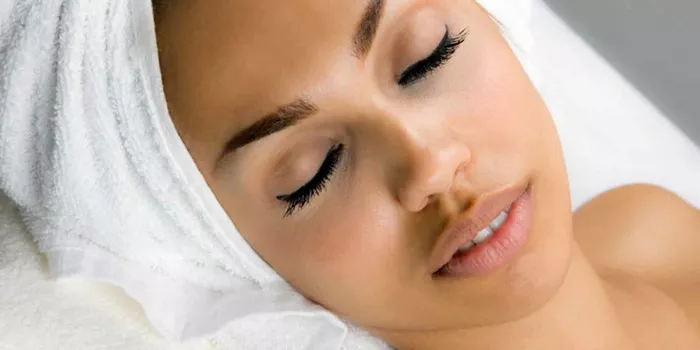As we age, one of the most common and visible signs is the development of deep wrinkles on the face. While wrinkles are a natural part of the aging process, many individuals seek effective treatments to reduce their appearance and maintain a youthful complexion. In this article, we will explore various treatments that have proven to work on deep wrinkles, including both non-invasive options and more advanced procedures. Understanding these treatments can help individuals make informed decisions about the most suitable approach for addressing their specific concerns.
Understanding Deep Wrinkles
Deep wrinkles, also known as static wrinkles, are formed due to a combination of factors, including a decrease in collagen and elastin production, loss of skin elasticity, repeated facial expressions, and sun damage. Unlike dynamic wrinkles, which appear temporarily with facial movements, deep wrinkles are etched into the skin and remain visible even at rest.
Common areas where deep wrinkles often appear include the forehead, around the eyes (crow’s feet), between the eyebrows (frown lines), and around the mouth (marionette lines).
Topical Retinoids
One of the most well-researched and effective treatments for deep wrinkles is the use of topical retinoids. Retinoids are derivatives of vitamin A that help stimulate collagen production, improve skin texture, and promote skin cell turnover. Over-the-counter retinol or prescription-strength retinoids like tretinoin can visibly reduce the appearance of deep wrinkles over time.
When using retinoids, it is essential to start with a lower concentration and gradually increase the usage to minimize potential irritation. Incorporating retinoids into a daily skincare routine can lead to significant improvements in skin texture and the reduction of deep wrinkles.
Dermal Fillers
Dermal fillers are injectable treatments that can effectively address deep wrinkles by adding volume to the skin and plumping up the affected areas. Hyaluronic acid fillers are the most commonly used type of dermal fillers for this purpose.
The filler is carefully injected into the wrinkles, filling in the gaps and smoothing out the skin’s appearance. The results of dermal fillers are immediate, and the treatment is minimally invasive with little to no downtime. The effects can last anywhere from several months to over a year, depending on the specific filler used.
Botulinum Toxin Injections
Botulinum toxin injections, commonly known by brand names like Botox, Dysport, and Xeomin, are another popular treatment for deep wrinkles caused by facial muscle contractions. These injections work by temporarily relaxing the muscles responsible for forming wrinkles, thus softening their appearance.
Botulinum toxin injections are commonly used to target forehead lines, crow’s feet, and frown lines. The treatment is relatively quick, and the results can last for several months. Regular maintenance treatments are required to sustain the effects.
Chemical Peels
Chemical peels are exfoliating treatments that can improve skin texture, stimulate collagen production, and reduce the appearance of deep wrinkles. During a chemical peel, a chemical solution is applied to the skin, causing it to exfoliate and eventually peel off. As the skin regenerates, it appears smoother and more youthful.
Different types of chemical peels are available, ranging from superficial to deep peels. The intensity of the peel will depend on the individual’s skin type and the depth of the wrinkles being targeted.
Microneedling
Microneedling is a minimally invasive procedure that involves using a device with fine needles to create controlled micro-injuries in the skin. These micro-injuries trigger the body’s natural healing process, leading to increased collagen production and skin rejuvenation.
Microneedling is effective in reducing the appearance of deep wrinkles, improving skin texture, and enhancing overall skin tone. A series of treatments is often recommended for optimal results.
Laser Resurfacing
Laser resurfacing is a more advanced treatment option for deep wrinkles that uses laser energy to remove the damaged outer layer of the skin and stimulate collagen production. Fractional laser treatments are particularly effective for targeting deep wrinkles while minimizing downtime and side effects.
Laser resurfacing can provide significant improvements in skin texture and the reduction of deep wrinkles. However, it is essential to choose a skilled and experienced provider to perform the procedure safely.
Sun Protection
Regardless of the treatments chosen, protecting the skin from sun damage is crucial in preventing the formation of new wrinkles and maintaining the results of any anti-aging treatments. Daily use of broad-spectrum sunscreen with at least SPF 30 and seeking shade during peak sun hours are essential components of a comprehensive anti-aging skincare routine.
Conclusion
Deep wrinkles are a natural part of the aging process, but effective treatments are available to help reduce their appearance and restore a more youthful complexion. Topical retinoids, dermal fillers, botulinum toxin injections, chemical peels, microneedling, and laser resurfacing are among the most effective options for addressing deep wrinkles.
Each treatment has its benefits and considerations, and it is essential for individuals to consult with a qualified dermatologist or skincare professional to determine the most suitable approach for their specific concerns. Additionally, maintaining a consistent skincare routine, practicing sun protection, and adopting a healthy lifestyle can complement and prolong the results of anti-aging treatments, helping individuals achieve smoother, more youthful-looking skin and renewed confidence.


